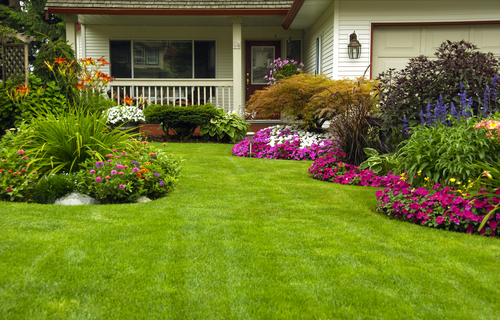Ideas On How To Save Water For Gardening
Gardening is a recreational activity for many Californians. Creating and maintaining a lovely garden is the dream of every gardener. With seasonal plants, exotic varieties and breathtaking blooms nurturing and maintaining a garden can sometimes be pretty challenging task.
There are several activities and responsibilities that need to be considered and employed in order for a garden to be properly maintained and nurtured. One of these main responsibilities would most definitely include the provision of water to trees, plants and flowers.
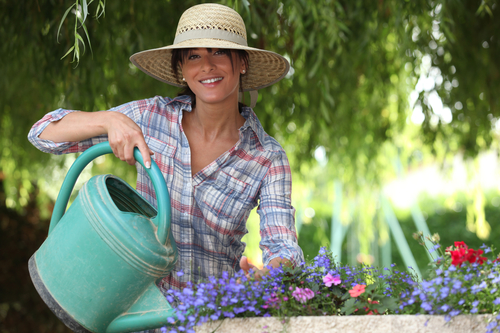
Successful Gardening
When it comes to supplying a garden with water most people have the perception that all is well so long as plants and flowers get watered however this may not exactly be true as there are many factors that can affect the way trees, plants and flowers receive water.
Since this is the case trees, plants and flowers can be affected in such a way that they don’t obtain sufficient nourishment to grow or bloom as they should. Even though this may be so giving trees, plants or flowers an excessive supply of water can be harmful to them and costly for you.
So in order to eliminate most of the issues that are encountered in gardens as it relates to watering plants incorrectly here are a few insightful tips that gardeners could utilize to reduce costs and water usage in gardens.
One very resourceful way to reduce the amount of water used in gardens is to attend and maintain soil. Adding mulch and organic matter to soil are both excellent ways to reduce the excessive use of water in gardens. They both help to improve water retention and soil structure so that plants don’t constantly need to be watered.
Disproportionately watering gardens tends to not only be a wasteful practice but also causes gardeners to do more work than is actually necessary. So to rectify this issue simply check to see if plants, trees or flowers do or do not require water.
To do this gardeners should take a spade and push it deep into the soil if it’s damp things are ok but if it’s dry then it’s definitely time to water. It is important to remember if you have clay soil it might feel damp whether it’s irrigated or not and sandy soil can feel dry even if it contains water. So in these cases gardeners should watch plants for when they start to show signs of water stress.
Knowing the best time to water plants is extremely important and by utilizing certain tools and techniques such as automated irrigation, sprinkler systems, watering cans or hoses water can not only be adequately supplied to plants at the required time but their use can minimize the amount of time spent and the amount of water used watering gardens.
In addition another way to supply water to plants and reduce usage would be to collect rain water. Place an empty receptacle at the end of drains to collect rain water whenever there is a shower of rain.
With this method people could reduce the usage of water in their gardens by 50% helping them to save money and at the same time still being able to care for their gardens.
These helpful tips can easily help gardeners to save time and money but most importantly it can help them to save a very, precious resource. Contact us for more information.
Preserve The Ecosystem With Gorgeous Landscape Designs
Over time scientists, environmentalists and activists have all pleaded with persons around the globe to take responsible measures when it comes to the safety and preservation of our environment. You can create landscape designs that enhance your surroundings and that are environmentally friendly as well.
Ecofriendly Landscape Designs
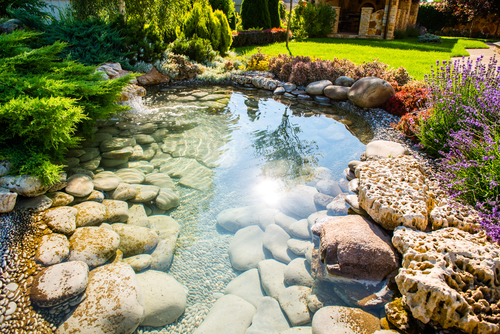
In order to achieve this persons around the world must take action by positively inspiring others to take care of their surroundings along with improving environmental aspects of society, nature and its resources. If these positive actions are consistently promoted and executed even to the tiniest degree they result in a major impact on the environment.
Having a wholesome and positive impact on the environment can be achieved in many ways some of which include recycling and reusing products and properly disposing of garbage and hazardous waste.
Another dynamic and eco-friendly solution would be for persons to preserve ecosystems by using impressive landscape designs. The birds, butterflies, squirrels and many other small creatures all call our gardens or outside surroundings their homes.
These delightful creatures astonish, entertain and offer us a tranquil ambience in and around our homes and surroundings. The individual role of each creature also plays a vital role to the environment and our ecosystem so it is very important that we help to attract and preserve all the elements that influence and affect their habitats.
One suggestion that has proven to be very effective as it relates to preserving the ecosystem would be to grow plants that attract wildlife. By planting the right flowers, trees, shrubs and vines in our gardens and backyards we will be helping to nurture and protect the ecosystems that exists all around our homes and communities.
Using plants and trees that occur naturally in the area you live provides an excellent source of food for birds, insects and other wildlife. Nectar, seeds and tasty fruits are all on the menu however pollen and nectar are among the most common food sources for insects and small birds so by utilizing pollen rich plants like wildflowers and other old fashioned varieties along with annuals and perennials we offer food, nectar and pollen to birds and insects throughout the growing season.
It may not seem like it but by planting a variety of trees and plants we also offer much needed shelter and protection to wildlife to rear their young and hide from predators. Utilizing tips like letting a part of your lawn grown wild to offer sanctuary to ground nesting bees or allowing a dead, hollowed, tree to stand to create nooks for birds and butterflies.
Bird baths, nesting boxes and small ponds all help to promote and increase the wildlife population around us which results in thriving ecosystems. Having readily access to water is very crucial to wildlife survival so again by installing a water gardens or a catch basins for rain can certainly help to provide a constant stream of water for wildlife in our surroundings.
In order to make this a reality as well as to get and stay on a path that encourages the preservation of the environment and it’s many ecosystems the goal would be for each individual to take responsibility and perform positive acts daily that ultimately improve, enhance and protect the environment as a whole. Contact us for more information.
Have A Narrow Walkway? Try These Gardening Tips
There are quite a few gardeners out there who have an extensive knowledge of plants and landscaping in which they use to come up with some very impressive and unique ideas for their gardens. However there are still many amateur gardeners or homeowners out there who love to beautify their properties and are excited about doing new things but lack gardening knowledge.
Try These Gardening Ideas
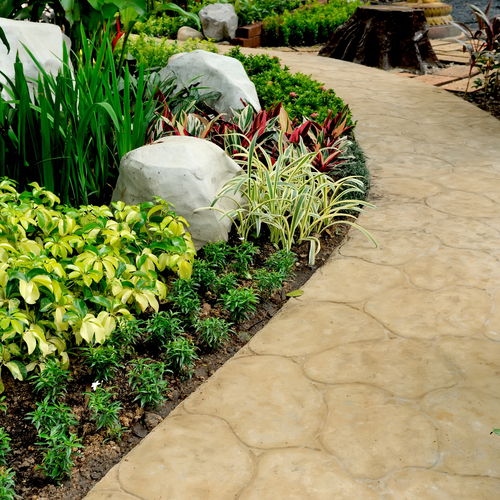
This might be just what you are looking for as this article offers some pretty insightful and dynamic tips that people can utilize to create gorgeous landscape designs while adding ambience and character to their surroundings.
Before focusing on choice of plants a great idea might be to add an outstanding feature to accessorize the garden and surrounding areas of the home. Installing an ornamental gate at the entrance of your walkway is a great start. This will immediately make the walkway feel more private for you and still feel inviting to visitors.
Once this is done establishing a focal point in the garden or surroundings would be the next step. Using an attractive tree, bird bath or bench brimmed with brightly colored plants can serve to draw the eye beyond the walkway while enhancing the appearance of the entire garden.
If the walkway or pavement needs repair it would be best to ensure that this is done in the initial stages. You should not wait until after you’ve planted the flanking beds mainly because this is exactly where you or your contractor will need to tread while working on the path or pavement. So to avoid the destruction of garden beds make sure you do any necessary repairs before proceeding to that stage.
Once you have secured and established the basic groundwork for your garden you want to make sure you choose the correct plants trees and flowers. If you reside in an urban area the best plants to use are low-growing perennials. Besides their beautiful shades most of them die in the winter or can be cut to the ground. This makes it easier for gardeners when dealing with the snow as well and when it’s time to regrow the next growing season.
- The Ajuga, lysimachia, and creeping phlox species all spread like a carpet and Ajuga reptans ‘Catlin’s Giant’ has burgundy-bronze leaves that supply color to surroundings long after its deep-blue flower spikes fade in late spring.
- The Lysimachia nummularia species possesses a delicate, looking foliage that covers ground quickly and softens the edges of a path.
To add more color and variety consider using the Phlox stolonifera species which is popular for the graceful flower clusters it sends up on 8-inch stems in late spring. The wild form is usually bluish but there are also blue, white, and pink varieties.
To give an added touch to your paths or walkways using slightly taller plants would be best. They won’t bend into the way of people using the walkway and at the same time they add a contrasting feature to the surroundings. Be sure though to avoid using plants more than 8 inches tall to prevent overgrowth in the walkway along with overshadowing other features within the garden.
Ensuring that a safe and nurturing environment is maintained throughout, gardens and surroundings should be the priority of every gardener. If in difficulty or you may be lost in some areas hiring a professional would be the best course of action, but if you are just looking for tips to improve and enhance there are a network of informative and effective tips available online that give tremendous insight into how those ideas can be achieved. Contact us for more information.
Spring Landscaping Ideas For The Perfect Garden
Landscaping during spring can give you a luxurious and glamorous looking garden. Spring is classified as one of four temporal seasons experienced here on our planet which occurs just after the winter and just before the summer. When most people refer to spring or ‘springtime’, to them it becomes synonymous with ideas of rebirth, rejuvenation, renewal, resurrection and regrowth.
Nevertheless due to the cold conditions brought on by the winter season it is highly likely that most plants, trees and shrubs will suffer substantial damage during the early part of the year. If you have a garden in and around your surrounding property protecting your plants from any damage or destruction should always be a major concern.
Landscaping Your Property During Spring
Since the springtime is seen as a time of rebirth and regrowth there are some additional tips that gardeners can employ to ensure that they maintain a safe and nurturing environment throughout their gardens.
Due to the harsh, cold, conditions of winter debris inevitably accumulates in grass and on lawns. Since lawns require no more than ½ an inch of buildup gardeners should rake away any excess debris from their grass or lawns. This also helps to control thatch on the lawn and offers an opportunity to look for matted areas. Raking will also allow the lawn a chance to breathe again.
Over time lawns can become compacted especially with a lot of traffic or excess debris so to help with this it is highly recommended that gardeners aerate lawns in order to avoid this. If you are not sure how to aerate your lawn you can always contact a professional landscaping service to come and assist with this.
Apart from some lawns having excess debris some can be found to have a lot of patches and bare areas. Overseeding is one method gardeners can utilize and refers to the applications of seeds to fill bare or patchy spaces in lawns . Although this alternative is generally recommended for the fall season it can be done in the spring if absolutely necessary.
If you have a sprinkler system the springtime would be the ideal time to inspect it for any damages and if any to perform repairs. However if all is well and no issues are detected this would also be the perfect time to have your system reactivated.
The spring is also a good time to apply some pre-emergent weed control to plants. This serves significantly control weeds in gardens as well as to act as a barrier against future weed seedlings. Gardeners should always keep in mind that this should be done before applying any organic fertilizers and to ensure effective weed control applications should be done on a continued basis in and through the summer.
Mulching is another effective system that gardeners ought to practice during spring as it offers several benefits to existing or emerging flowers, plants and trees in gardens. Placing mulch in flowerbeds and around plants and trees helps them retain moisture during the early spring months. It also helps to reduce the temperature of plant roots and insulates them in event of an unexpected freeze during the spring.
It is only natural that all gardeners, landscapers and farmers alike all want their gardens or crops to thrive and be protected so by utilizing a network of useful informative and effective tips available online or by hiring professional services those goals can ultimately be achieved. Contact us for more information.
How To Winterize Your Drip Irrigation System
Leaving a drip irrigation system in its natural state during the winter is a mistake. Be proactive and winterize your drip irrigation system with the methods outlined below. These winterization methods will safeguard your drip irrigation system, protecting your investment as well as your property. If you fail to properly winterize your drip irrigation system, the system’s valves, plastic fittings, poly pipe, filters, PVC pipe or layflat hoses might burst as a result of water freezing inside. Even the main water lines can be damaged if you fail to winterize. It will take an hour or less to winterize your system. Here is how to do it.
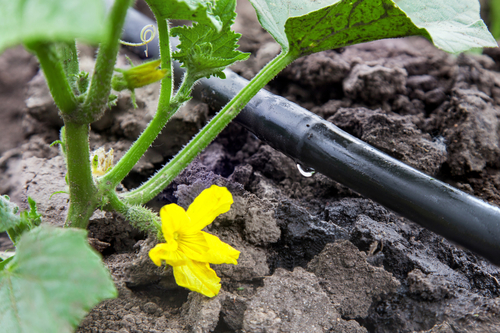
A Helpful Preventative Measure for Drip Irrigation Systems
One of the best ways to prevent freezing in your drip irrigation system is to install automatic drain valves. Position them at the lowest possible point within the system. Drain valves allow water within the line to drain out. Some experts also recommend running chlorine (2 PPM) into the system and flushing it out thoroughly for a comprehensive clean ahead of the winter.
The First Step
Begin by turning off the main water supply to the drip irrigation system. Do this the day before freezing weather arrives. Make sure that there is no water in the backflow device, filter, valves, drip hose, sprinklers, pipe and pressure regulator. Run the controller/timer through its regular watering cycle. This allows each valve to open. Water pressure is relieved from the valves as well as the main line. Let the lines drain.
If the spring-loaded drain valves toward the system’s end are not properly installed, the main line might not fully drain. In some instances, the ground is not completely flat or the drain valve is positioned toward the bottom of the system. If you have any doubt as to whether the main line is drained, make use of air pressure to fully flush out the system.
Drip Tubing/Micro Tubing
Start out by disconnecting the drip tubing with the filter assembly’s swivel adapter. Wrap this piece to the filter assembly so grime doesn’t reach the drip tubing. If your drip tubing is above ground, open each end to permit the draining of water. Lift the hose a couple feet at a time so water can drain out. Once the water drains, close the drip tubing ends.
Irrigation Valve Assemblies
If your system makes use of AC valves with a pressure regulator and filter or battery operated controllers, consider storing them inside a warm area during the cold months of the year. If you can easily remove the full assembly from the pipe, you can store this assembly unit all the way from the pressure regulator to the controller indoors for the winter. If separating the valve assembly or filter assembly is not feasible, loosen or remove the valve bonnet to ensure the water from the upper portion of the diaphragm and filter cap can drain.
How to Proceed Through the Duration of the Winter
Leave the system in the “off” position and fully drained throughout the duration of the winter. If you decide to water your plants, yard or other items on your property, use your hose. In most instances, there is ample moisture within the ground to sustain your greenery until spring.
We’re Here to Help With Everything Irrigation-Related
If you have any questions about how to winterize your drip irrigation system, reach out to our landscape maintenance company. We specialize in irrigation and water saving landscape design. Put your faith in our irrigation experts and we will improve the beauty, integrity and utility of your property. Contact us the experts for more information.
Different Kinds of Irrigation Systems
If you are a farmer, gardener or even a landscaper you probably know how important it is to have an irrigation system installed to supply your plants, gardens or crops with water. Most irrigation systems are used during dry seasons when rainfall is scarce but since there are several types of irrigation it would be important for persons to identify which type would best serve their needs.
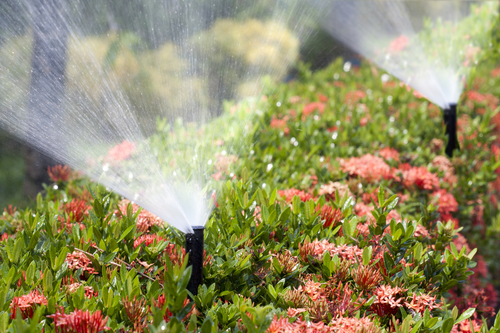
Lets Look At irrigation Systems
Irrigation techniques may differ in several ways but the basic concept of the system is that water is obtained from a source and is distributed to plants or crops. Generally the aim of the system is to equally and uniformly distribute specific amounts of water to each plant or crop.
Types of irrigation used include high or micro flow irrigation, sub-irrigation, in-ground irrigation, localized irrigation and even automatic irrigation systems. They are all utilized to best suit their specific purpose however the two, most, commonly, used systems are the high flow or micro flow irrigation systems.
With these two main types of irrigation systems one releases water with a high flow and the other distributes water with a low flow or a drip. The high flowing system operates so that water spreads heavily across the surface of the specified area, in order to wet and infiltrate into the soil and the low flowing system functions so that water falls in a dripping fashion and is delivered directly at the position of roots.
The high flowing system is mostly used when irrigating agricultural land. Here water levels that originate from the irrigation source and are used to flood or control the level of water in each distinct field. The flooding system is controlled by dikes which are slopes that help to regulate water levels. This form of irrigation is mostly seen with the cultivation of rice.
The low flowing or drip irrigation system as we know obtains water from a source and transports and delivers it to plants through emitters, mini rotors, micro sprays or drip lines in a dripping fashion where water goes directly to roots.This method has been seen as the most, water-efficient, method, of irrigation as it utilizes less water and once managed properly minimizes evaporation and runoff.
Since drip irrigation systems are the more domestic and commonly used system here are a few tips that can assist persons with operating and maintaining them so that they function as efficiently as possible.
For this type drip lines are most recommended and should be used for continuous rooting as they have flexible tubing containing tiny, water, flow, regulators, for evenly spaced water distribution.
Micro sprays and mini rotors clog easily, and should be regularly maintained. Monthly investigations should be conducted and if necessary repairs or replacements done to ensure there are no irregularities within the system.
Laying out emitters individually can also prove to be an efficient practice as this delivers water exactly where the plant needs. It reduces the amount of weeds produced and eliminates excess, irrelevant water. Persons also need to make sure that their drip system includes pressure reducers and filters as these ensure water is measured accurately and delivered at the specified rate.
Remember that these systems must be designed to prevent runoff, low head drainage and overspray. For more information on irrigation contact us.
Winter Plants – Part 2
During the winter season creatures prefer to hibernate and wait until nature affords them the opportunity to venture out into warmer conditions. There are no different to us humans as we seek to make our homes warm and comfortable during the dreaded winter weather. Your garden is certainly apart of your home and you should do all in your power to ensure it can handle winter’s fury and look its best. Vibrantly colored winter plants or even winter vegetables can enhance the life of a damp gloomy landscape.
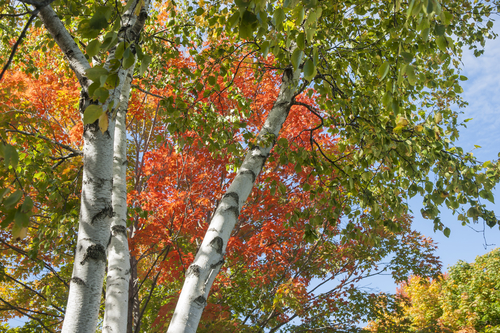
Know Your Winter Plants
An uncommon but very fascinating winter plant is Harry Lauder’s Walking Stick or Corkscrew Hazel. Even though, this shrub flowers in the spring season, it is a beautiful winter plant. This is due to its coiled and zigzagged branches. This plant tends to grow better in a fusion of bright sunlight and shade. The branches will need frequent trimming to preserve its attractive appearance however when they fall they can resemble an overgrown untidy mesh of wood.
The Paper Birch tree displays its gorgeous yellow leaves in autumn. However, when it gets extremely cold, its white bark provides a sensational difference to a backdrop of evergreens. Frequently they are used during the Christmas holidays in many gardens. The paper birch tree should be planted in deep holes with mulch to keep it damp. Partial sunlight will be essential for this plant.
The Heather plant is another suitable winter plant. It flourishes all year round and provides attractive flowers in summer and fall. It’s rich foliage provides a fascinating difference when compared to other winter plants. You should plant these in winter with mulch in an area that obtains excellent sunlight.
Holly has always been linked to winter and there are 400 assortments to select from ranging from small to gigantic trees up to 80 feet. There are various types of the holly plant to fit every garden and winter scenery. Its vibrant berries and dense foliage make it very eye-catching.
Hellebore is another winter plant that can be obtained in a fusion of selections. When flourishing it has a cup like shape and they come in an array of colors making it easy to find a color that best suits your winter garden. This plant flourishes better in total shade. Contact us for more information on how you can make create the perfect winter landscape.
Winter Plants – Part 1
Nature provides numerous varieties of winter plants that flourish in cold temperatures. There are winter plants that will flourish even in snowfall and there are others that can mirror their vibrant colors from the icicles hanging from your home.
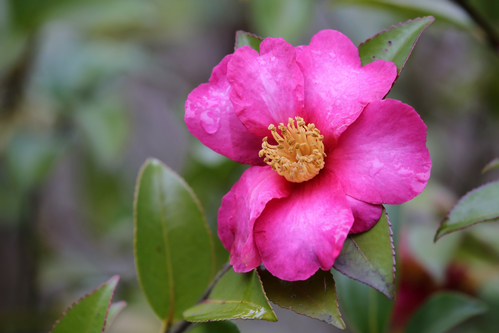
Winter Plants For A Breath Taking Scenery
One of the well-liked winter plants is the Camellia. This evergreen flourish from fall to early spring. With its brightly colored rose like flowers this plant provides a breathtaking difference to a sombre winter scenery. Camellia should be sowed in an area that have some sun but not too much
The winter-berry which is related to the holly and loses its leaves in fall is a great plant to have this time of year. You and your loved ones can enjoy the vibrant red berries that come into their own. The berries attract the birds during this time which is a sight to see and the birds will be happy for your blessings as well. You must plant the seeds during the fall in a small frame, then you can transplant them to fertile damp soil in the spring. However it is a slow growing winter plant, with its germination taking about 2 to 3 years.
Paper Maple has ringlets of copper colored bark flaking off all over and this constructs a pleasurable image both on the plant and while the leaves lay on the ground in all their splendor. During fall the green leaves change into a fascinating cinnamon shade and the plant grows in sunlight perfectly.
Red Twig Dogwood is an old-time golden boy as the color of the plant is sustained all year round. The boldness of the plant’s color relies on the sunlight it obtains. This is another incredible addition to consider in your garden during winter.
Firethorn is lasting and it has an appealing view all year. It has little bunches of glistening white flowers in spring and vibrant shiny green leaves the rest of the year. The little pea like berries can be either orange or yellow in color and these can survive until long after fall is over. The seeds should be sowed in the fall in a cold frame then transplanted to properly drained fertile earth in the spring.
If you want the best in lawn maintenance and advice contact us as DK landscaping. Our team of experts will help you give your garden the nutrients and the proper care it needs to survive and remain lush.
Winter Services for Property and Landscape Maintenance
The cold temperatures and dry air can prove to be quite the burden on your lawn and landscaping. Property owners can preserve the integrity of their lawn and landscaping by reaching out to our lawn and landscape maintenance professionals for expert treatment. Ally with DK Landscaping and we will make sure your property maintains its beauty throughout the winter, spring, summer and fall.
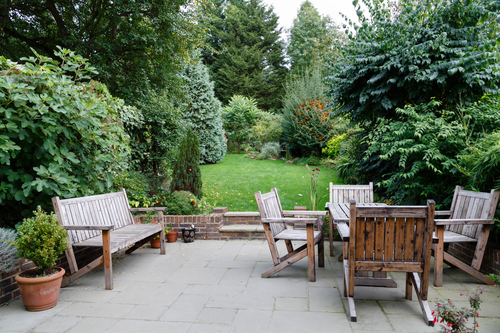
Winter Lawns and Landscaping Maintenance
Your front and back lawns are not a lost cause during the winter months. Though the frigid temperatures will take a toll on all forms of life, it is certainly possible to maintain a lovely lawn, shrubs, flowers, trees and other greenery during the coldest portion of the year.
DK Landscaping knows exactly how to treat lawns during the winter. We make use of a unique winter fertilizer that keeps lawns looking fantastic even when the temperatures dip down toward the freezing mark. Our special fertilizer enhances grass so it does not require an abundance of water. It also stimulate robust root development that ultimately preserves the integrity of your grass across the years to come. This fertilizer even bolsters your lawn’s ability to combat disease and withstand heavy foot traffic.
Ally with DK Landscaping for winter lawn and landscaping maintenance and you will notice a considerable difference in your property’s beauty. We know exactly which trees, shrubs and flowers should be pruned during the winter months. Furthermore, our team understands the extent to which each type of shrub and flower should be pruned.
As an example, we prune certain roses back by upwards of 80 percent during the winter months. Certain types of grass such as ornamental grasses require 90 percent pruning during the coldest months of the year. This is the type of attention to detail that separates your lawn’s health and beauty from the pack. Put your faith in DK Landscaping to sweat the small stuff and you will enjoy the benefits in the form of glorious lawn and landscaping that holds its beauty far into the future.
Water Preservation
The winter months can be brutally dry. You might be tempted to water your grass, trees, flowers and shrubs quite frequently during this time of the year. Yet you don’t want to run up an expensive water bill or spend your limited free time outdoors in the bone chilling cold with a hose in your hands! Your best course of action is to turn to the irrigation experts at DK Landscaping.
We know all the best methods to disperse water in a highly efficient manner. We also perform water saving landscape design known as “xeriscape“. Homeowners and commercial property owners can both benefit from the efficient distribution of water across lawn and landscaping. Our goal is to conserve water, save you plenty of money and keep your lawn in tip-top shape.
In addition to water saving landscape design techniques, we also make use of native plants acclimated to the dry air, runoff prevention methods, drip irrigation, MP rotators and smart evapotranspiration timers. The end result is a stunning lawn and landscaping that requires substantially less water than previously needed.
Ask any of our current or former customers about our water conservation design methods and equipment and they will testify to the legitimacy of these strategies.
Let our landscape maintenance experts take a look at your property and we’ll start brainstorming ways to boost its aesthetic. Whether you are looking for a beautifully green lawn or elegant landscaping, DK Landscaping can make it happen. Reach out to us to schedule an initial consultation.
Winter Gardening: Growing Vegetables
Though snow may lie deep in drifts outside your window, this is the ideal time to get started with this year’s winter gardening program. There are many garden tasks that can be done now, while there is ample time to plan, research, and begin gathering materials. Some gardeners consider these winter chores to be the most enjoyable parts of gardening. Tasks can be accomplished comfortably from your armchair as the garden takes shape in your imagination, where it is always lush, abundant, and of course free of weeds.
Winter Gardening Advice
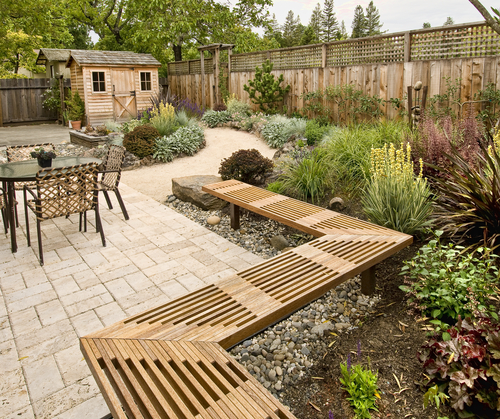
In midwinter, before the growing season gets underway you have time to organize yourself so you can accomplish everything you need to do from now until your garden is planted. This is the time to make rough plans which can be refined and modified as you go along. So while the birds twitter around their feeders and the forecast is for more snow, grab a stack of seed catalogs, some paper, and a pencil, and settle into a comfortable chair and plan your dream garden.
It is helpful at this early stage to make some key decisions about your garden. You need to compile the list of vegetables that you plan to grow. You must also decide which vegetables you will start from seed inside, which you’ll sow as seed directly into your garden, and which you’ll purchase as seedlings from a nursery. Additionally, you should list supplies you’ll need for cowing seedlings indoors, and begin to gather these items. It is also helpful to start composing a rough sketch of your garden layout. Finally, you should draw up a calendar of garden tasks to do to help you stay on schedule as the season progresses.
Start by thinking about which vegetables you’d like to grow this year. If you’ve had a vegetable garden before you should consider what grew well for you before and what failed. Certainly include any of your old favorites, those vegetables that are easy to grow and can be relied upon to produce abundantly. There may be new vegetables you’d like to try or new varieties of your old favorites that you would like to experiment with. Consider quantity too. Did you have as much as you wanted of everything last year? Was there something that you could not give away fast enough such as all those zucchinis? Perhaps there was something which you enjoyed eating but took up too much space?
If you haven’t grown vegetables before, a good way to start putting a list together is simply to consider what your family enjoys eating. You’ll want to think about vegetables that you’d like to provide fresh from your garden over the summer, as well as considering any vegetables that you’d like to can, freeze, or store for fall and winter eating. If this is your first vegetable garden it’s wise to start small. A small kitchen garden of ten or twenty square feet planted with a handful of vegetables and herbs will keep you fairly busy with garden tasks, supplement your family’s food, and provide you with good gardening experience to go forward.
Don’t forget to take your growing zone into consideration when choosing vegetables to grow. If you are not sure which zone you live in, you can readily find out in almost any gardening book or online. Do some research on gardening in your region to find out how long your growing season is, when planting time starts, and what types of vegetables do best where you live. Contact us for more information.


